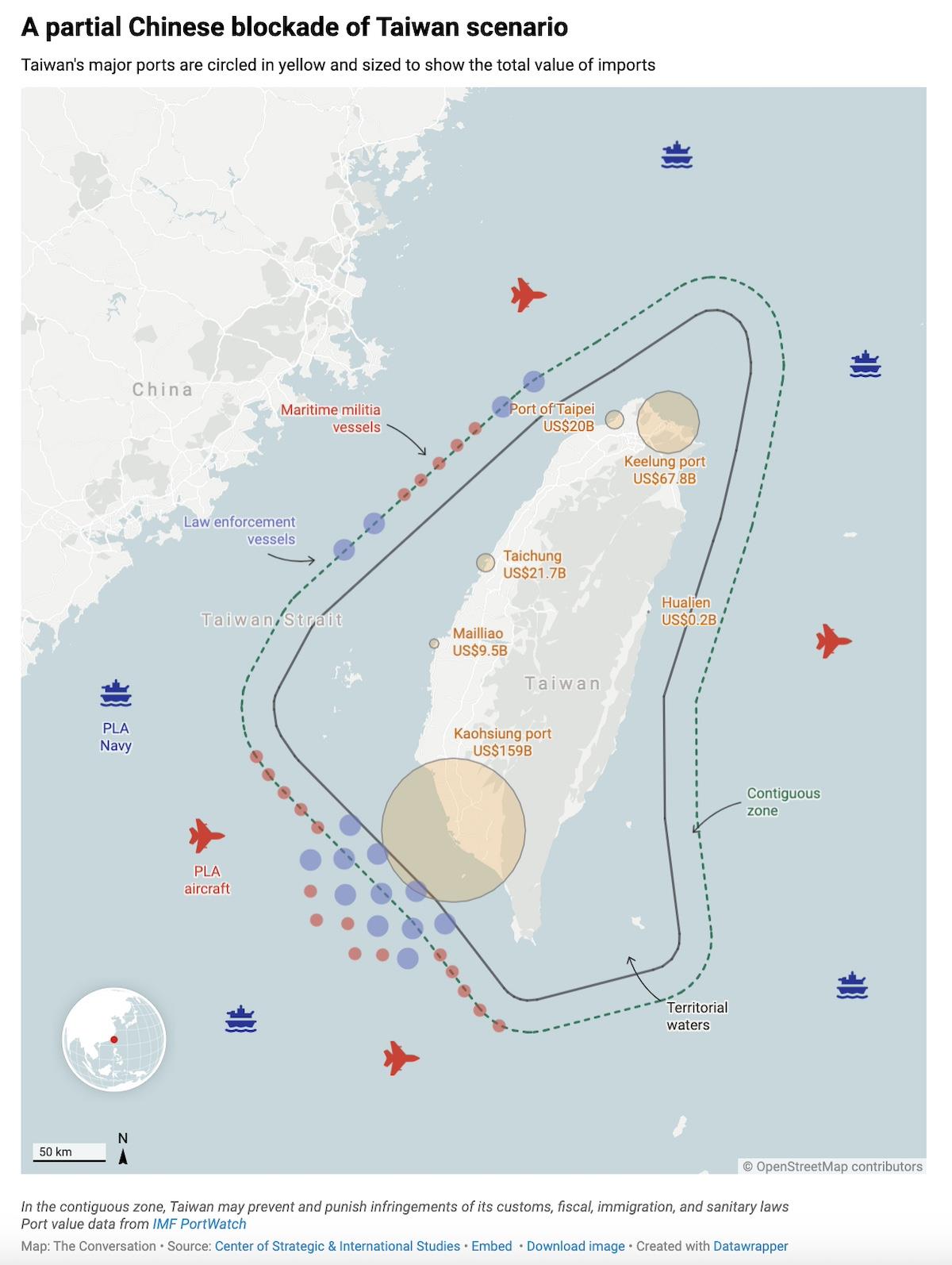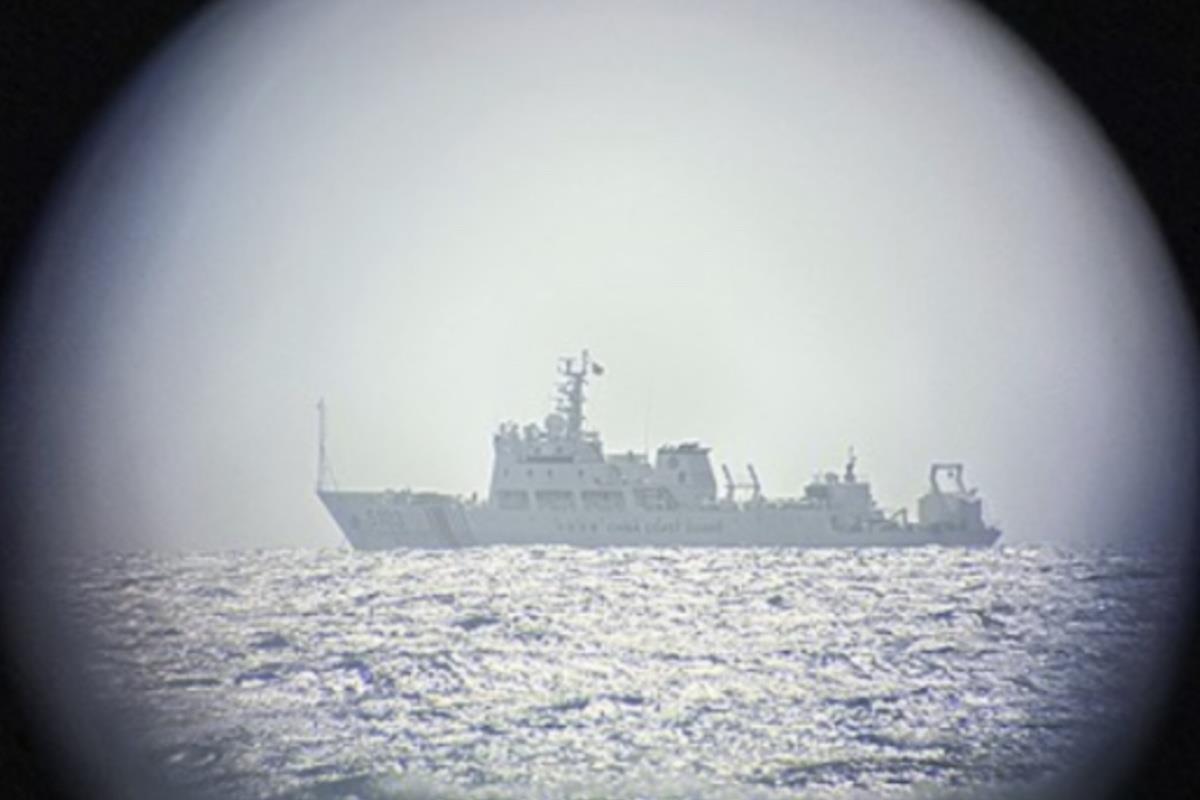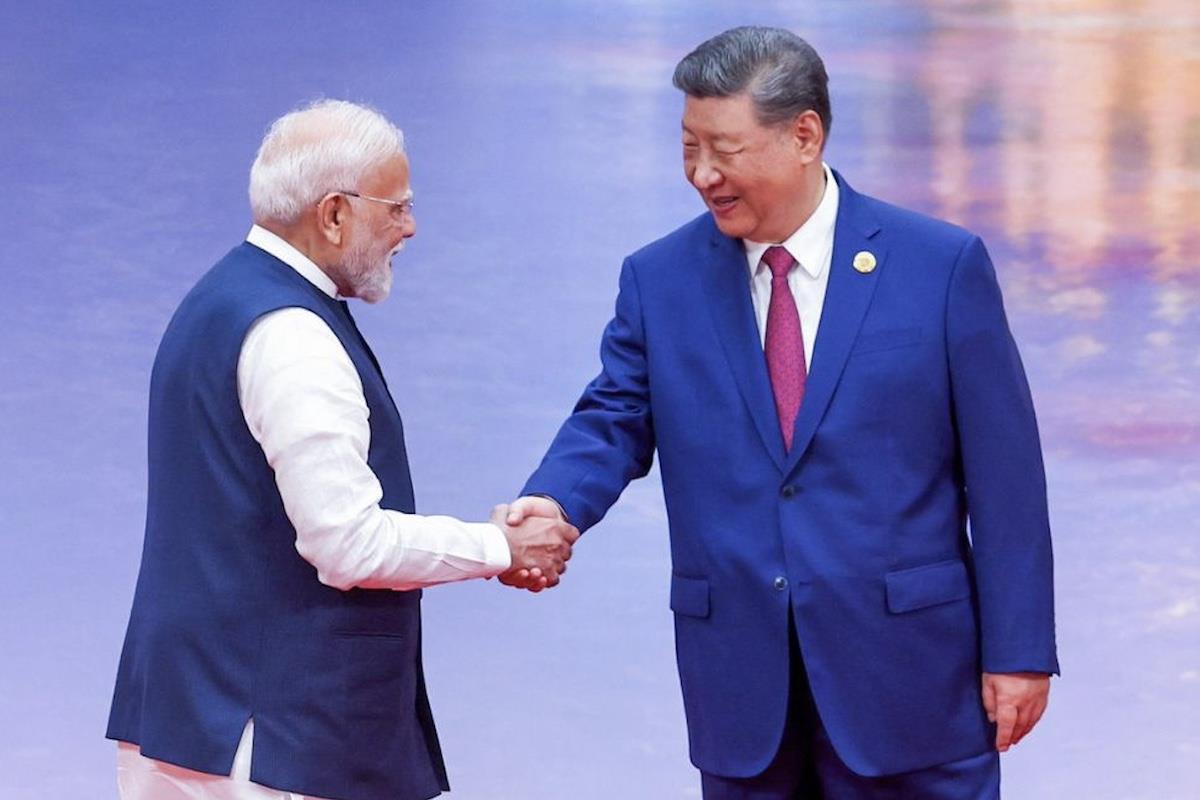A China Blockade Of Taiwan May Or May Not Work
US Secretary of Defense Pete Hegseth mentioned this date at a security conference in Singapore in May, warning of the“imminent threat” China poses to Taiwan.
The PLA has invested heavily in expanding and modernizing its operations in recent years. Since 2015, it has built the world's largest navy and coast guard.
But rather than threaten an invasion of Taiwan, China seems increasingly likely to pressure the self-governing, democratically ruled island with an extended blockade to force it to capitulate.
In preparation for such a possible action, China has developed a new command structure enabling it to coordinate its air, sea and land-based weapons systems to enact a strategy of lianhe fengkong (联合封控), or joint blockade. This would effectively cut Taiwan off from the outside world.
In late July, the Centre for Strategic and International Studies (CSIS) produced a report on 26 simulated war games it conducted to determine what a Chinese blockade of Taiwan would look like.
Taiwan's natural gas supplies were predicted to run out after ten days of a blockade. Coal and oil supplies would run out in a matter of weeks. If Taiwan's electricity was reduced to 20% of its pre-blockade levels, all manufacturing would cease. Casualties were expected to be in the thousands.
Taiwan is particularly vulnerable to a blockade. It relies more than any other developed nation on port calls relative to the size of its economy. Its biggest ports are on its west coast, facing mainland China. The island also has limited emergency food and fuel reserves .

Imposing a naval blockade during armed conflict is an established right under customary international law. Blockades are not illegal per se, but they must comply with the laws of war. It's a complicated and controversial area of the law.
To be legal, a blockade must first be effective. That is, the blockading power must maintain a force that prevents access to the enemy's coast.
Other nations must be notified of the instigation of the blockade and its geographical extent.

Legal Disclaimer:
MENAFN provides the
information “as is” without warranty of any kind. We do not accept
any responsibility or liability for the accuracy, content, images,
videos, licenses, completeness, legality, or reliability of the information
contained in this article. If you have any complaints or copyright
issues related to this article, kindly contact the provider above.
Most popular stories
Market Research

- Microgrid Market Growth, Key Trends & Future Forecast 2033
- Nickel Market Estimated To Exceed USD 55.5 Billion By 2033
- Primexbt Launches Empowering Traders To Succeed Campaign, Leading A New Era Of Trading
- Chaingpt Pad Unveils Buzz System: Turning Social Hype Into Token Allocation
- Ecosync & Carboncore Launch Full Stages Refi Infrastructure Linking Carbon Credits With Web3
- Japan Halal Food Market Size To Surpass USD 323.6 Billion By 2033 With A CAGR Of 8.1%



























Comments
No comment